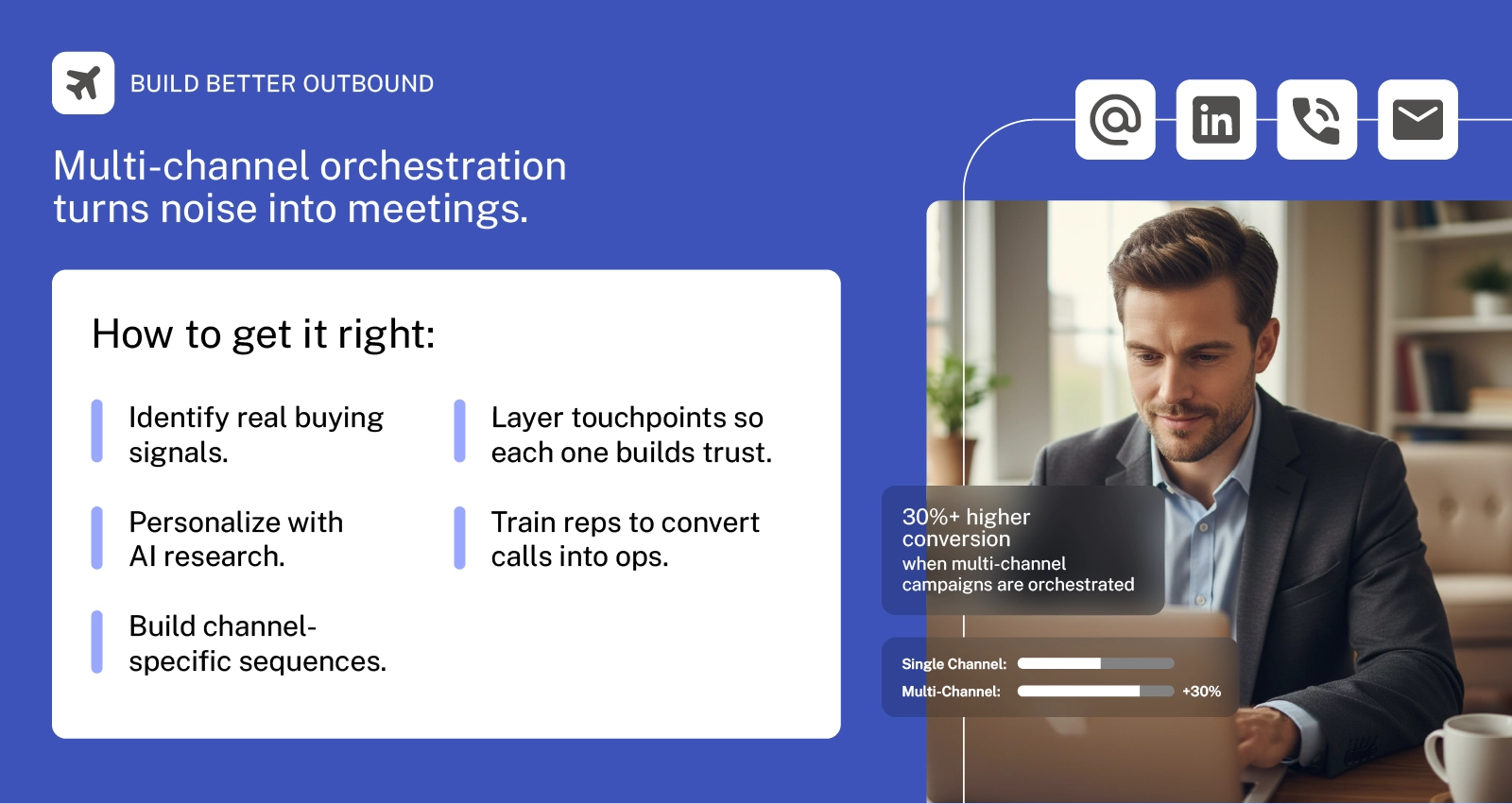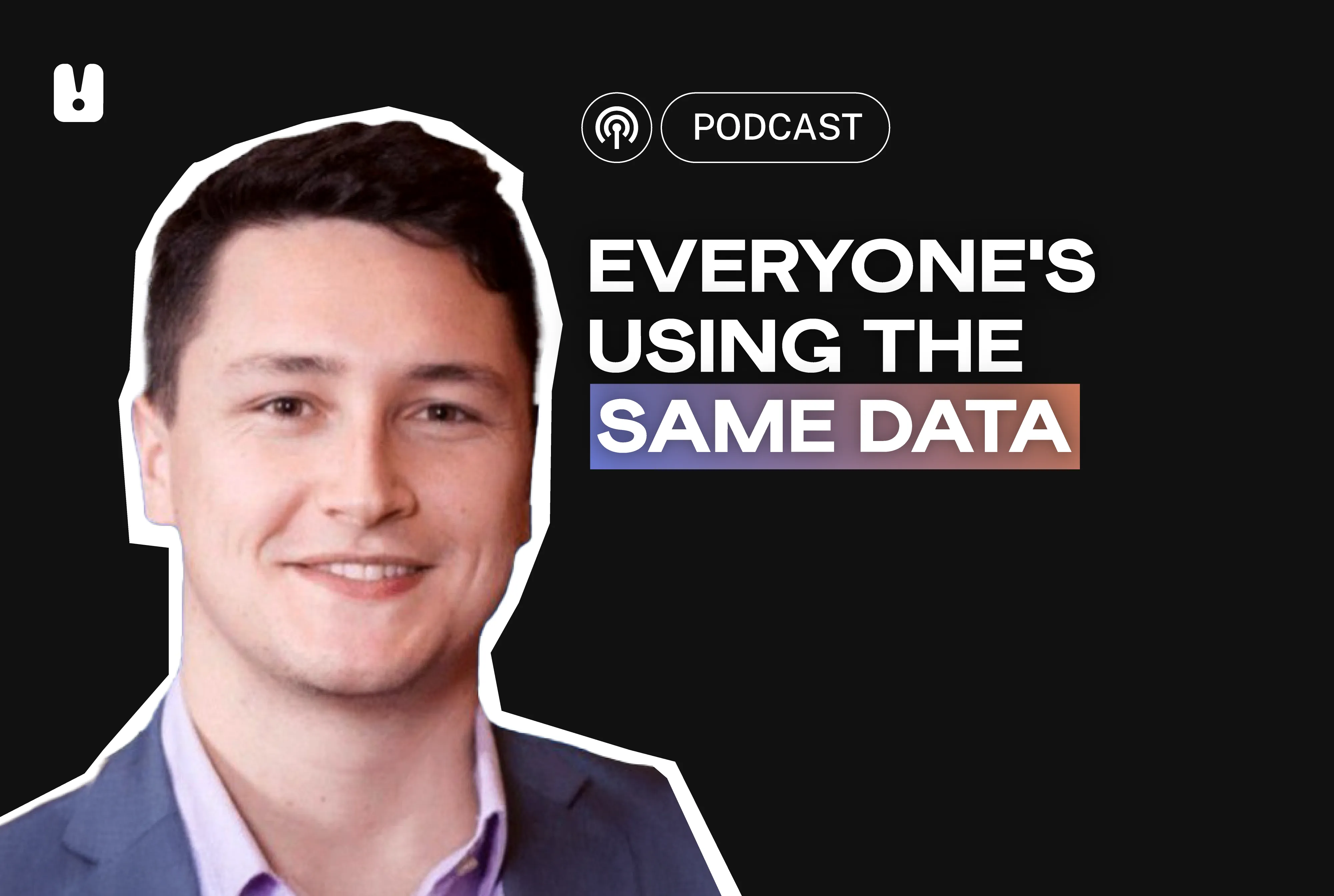

Marketing Budget LEAKED!
Ever wondered what a modern marketing budget actually looks like? Wonder no more.
In the latest episode of B2B Outbound, hosts Chris and James sat down with Madhav Bhandari, VP of Marketing at Storylane, who literally broke the internet with his transparent breakdown of their entire $3 million marketing spend.
Meet the Man Behind the Viral Post
Madhav runs marketing at Storylane, an AI-native demo automation platform that's been making waves in the fast-growing interactive demo space. With 15 years in B2B SaaS under his belt, he's the guy who decided to call BS on LinkedIn's culture of inflated growth claims.
His post revealing Storylane's exact marketing budget breakdown? Thousands of comments, views through the roof, and probably more sales pitches than he knows what to do with.
Why He Went Nuclear with Transparency
Madhav was sick of the LinkedIn humble-bragging epidemic:
"I was so sick of people just talking about, hey, you know, we had 6x growth and 5x growth in the last quarter. Genuinely good marketers just felt like they weren't doing good enough, right? While these were all just inflated numbers by people."
The reality check? Those "5x growth" claims often meant going from £50k to £250k ARR - very different from scaling £2 million to £10 million.
His solution? Total transparency. With his CEO's blessing, he made their entire marketing budget public because "ideas are everywhere, execution is what matters."
The Mind Map Method
Before throwing money at channels, Madhav starts with something brilliant - a massive mind map of where his ideal customers actually spend their time.
"I literally have this massive mind map where, like, okay, these are literally every potential place where they could be. Then I start attaching channels to them."
Think marketers? They're on LinkedIn, at events, Googling tutorials, watching YouTube. Each touchpoint becomes a potential channel investment.
The Portfolio Approach
Here's where it gets interesting. Madhav doesn't think like a marketer - he thinks like a fund manager.
"I think of it like a portfolio. All of these channels are like my stocks in the portfolio. I have to identify what channels have potential for really high investment with continuing returns."
The strategy:
- Start with one channel you know well
- Scale what works
- Kill what doesn't
- Constantly rebalance based on performance
At Storylane, this meant slashing SEO spend while doubling down on influencer marketing - a move that paid off massively.
The Outbound Revolution
Madhav wasn't initially a fan of outbound. But when their VP of Sales suggested marketing should own it instead of sales, everything changed.
His reasoning? "Outbound is about messaging, copywriting, it's about the creative. It's about how to connect with people and have them respond to it. That's a marketing problem, not a sales problem."
The transformation took 2-3 months, but the results speak for themselves.
Pattern Interrupt
Forget traditional outbound. Madhav's team focuses on one thing: pattern interrupt.
Instead of booking demos directly, they drive awareness and get people to the website. Their approach:
- Send interactive demos in emails
- Use plain text (no banners or images)
- Follow up with simple GIFs
- Focus on being genuinely different
The response? "Oh my god, this is so cool. I love this." Real inbox reactions from real prospects.
The Future of Outbound
Despite the "outbound is dead" crowd, Madhav's bullish on its future:
"It will be for sure, it's like a channel that continues to give. But it won't be about traditional email cold outbound... It will definitely have a transformation."
The key? Stop adding to the noise. Start breaking patterns.
Key Takeaways
- Transparency wins - Honest budget breakdowns build trust and credibility
- Think like a fund manager - Treat marketing channels like a stock portfolio
- Start with one channel - Master it before expanding
- Map your ICPs first - Know where they hang out before you invest
- Pattern interrupt beats pattern following - Different gets noticed
The Bottom Line
Marketing budgets don't have to be mysterious black boxes. When you're transparent about what works (and what doesn't), you build credibility and help the entire industry level up.
Madhav's approach isn't just refreshing - it's revolutionary. In a world of fake growth claims and marketing myths, sometimes the best strategy is simply telling the truth.
Ready to revolutionize your own marketing approach? Time to map those ICPs and start thinking like a fund manager.
Want to hear the full breakdown of Storylane's marketing strategy and budget allocation? Listen to the complete episode of B2B Outbound for all the insider details and actionable insights that didn't make it into this post.
Listen to the full episode here



Ever wondered what a modern marketing budget actually looks like? Wonder no more.
In the latest episode of B2B Outbound, hosts Chris and James sat down with Madhav Bhandari, VP of Marketing at Storylane, who literally broke the internet with his transparent breakdown of their entire $3 million marketing spend.
Meet the Man Behind the Viral Post
Madhav runs marketing at Storylane, an AI-native demo automation platform that's been making waves in the fast-growing interactive demo space. With 15 years in B2B SaaS under his belt, he's the guy who decided to call BS on LinkedIn's culture of inflated growth claims.
His post revealing Storylane's exact marketing budget breakdown? Thousands of comments, views through the roof, and probably more sales pitches than he knows what to do with.
Why He Went Nuclear with Transparency
Madhav was sick of the LinkedIn humble-bragging epidemic:
"I was so sick of people just talking about, hey, you know, we had 6x growth and 5x growth in the last quarter. Genuinely good marketers just felt like they weren't doing good enough, right? While these were all just inflated numbers by people."
The reality check? Those "5x growth" claims often meant going from £50k to £250k ARR - very different from scaling £2 million to £10 million.
His solution? Total transparency. With his CEO's blessing, he made their entire marketing budget public because "ideas are everywhere, execution is what matters."
The Mind Map Method
Before throwing money at channels, Madhav starts with something brilliant - a massive mind map of where his ideal customers actually spend their time.
"I literally have this massive mind map where, like, okay, these are literally every potential place where they could be. Then I start attaching channels to them."
Think marketers? They're on LinkedIn, at events, Googling tutorials, watching YouTube. Each touchpoint becomes a potential channel investment.
The Portfolio Approach
Here's where it gets interesting. Madhav doesn't think like a marketer - he thinks like a fund manager.
"I think of it like a portfolio. All of these channels are like my stocks in the portfolio. I have to identify what channels have potential for really high investment with continuing returns."
The strategy:
- Start with one channel you know well
- Scale what works
- Kill what doesn't
- Constantly rebalance based on performance
At Storylane, this meant slashing SEO spend while doubling down on influencer marketing - a move that paid off massively.
The Outbound Revolution
Madhav wasn't initially a fan of outbound. But when their VP of Sales suggested marketing should own it instead of sales, everything changed.
His reasoning? "Outbound is about messaging, copywriting, it's about the creative. It's about how to connect with people and have them respond to it. That's a marketing problem, not a sales problem."
The transformation took 2-3 months, but the results speak for themselves.
Pattern Interrupt
Forget traditional outbound. Madhav's team focuses on one thing: pattern interrupt.
Instead of booking demos directly, they drive awareness and get people to the website. Their approach:
- Send interactive demos in emails
- Use plain text (no banners or images)
- Follow up with simple GIFs
- Focus on being genuinely different
The response? "Oh my god, this is so cool. I love this." Real inbox reactions from real prospects.
The Future of Outbound
Despite the "outbound is dead" crowd, Madhav's bullish on its future:
"It will be for sure, it's like a channel that continues to give. But it won't be about traditional email cold outbound... It will definitely have a transformation."
The key? Stop adding to the noise. Start breaking patterns.
Key Takeaways
- Transparency wins - Honest budget breakdowns build trust and credibility
- Think like a fund manager - Treat marketing channels like a stock portfolio
- Start with one channel - Master it before expanding
- Map your ICPs first - Know where they hang out before you invest
- Pattern interrupt beats pattern following - Different gets noticed
The Bottom Line
Marketing budgets don't have to be mysterious black boxes. When you're transparent about what works (and what doesn't), you build credibility and help the entire industry level up.
Madhav's approach isn't just refreshing - it's revolutionary. In a world of fake growth claims and marketing myths, sometimes the best strategy is simply telling the truth.
Ready to revolutionize your own marketing approach? Time to map those ICPs and start thinking like a fund manager.
Want to hear the full breakdown of Storylane's marketing strategy and budget allocation? Listen to the complete episode of B2B Outbound for all the insider details and actionable insights that didn't make it into this post.
Listen to the full episode here















